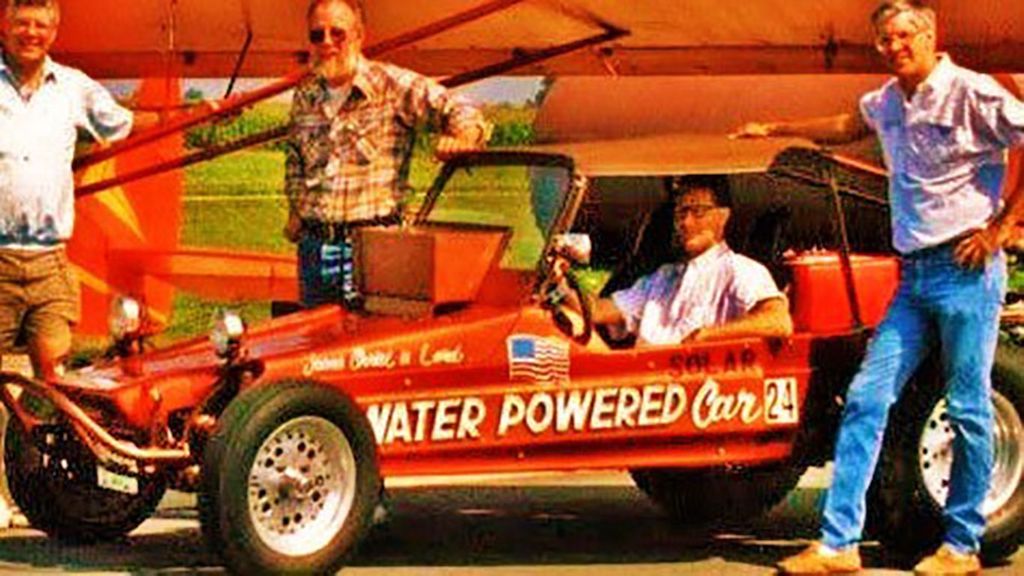Well, in 1971 in Spain a man claimed to invent an engine that worked with water, this is the story:
Arturo Estévez Varela, who designed, created and patented the first Spanish water engine. For some it turned out to be a fraud but, for others, ahead of his time.
Born in Valle de a Serena (Badajoz) in 1914, Arturo Rufino Estévez Varela studied Industrial Technique at Areneros de Madrid with Father Caracciolo. As head of a mechanical workshop, industrial expert and factory manager he began to patent inventions in 1931 and, over the years, until his disappearance from the public scene, his list of patents would grow to almost a hundred.
Estévez publicly presented, for the first time in 1971, his hydrogen generator, commonly called a 'water engine'. To promote it and give evidence of its operation, the inventor from Extremadura carried out the best possible marketing at that time, he toured a large part of the Iberian Peninsula and appeared in a large number of municipalities.
In his numerous demonstrations, Estévez used his four-stroke, 47-cubic-centimeter moped that had had its gas tank replaced by a hydrogen generator and, with a pitcher full of water from which he had previously drunk, he stood in a place crowded town and fed its contents into the generator.
Together with a few stones, a mineral substance never revealed by him, the Extremaduran inventor started the engine and walked around with his moped, as can be seen in the NO-DO recordings.
Although, previously, Estévez declared that the hydrogen with which the engine moved came from an amorphous paste to which water was added. This paste was the result of a sand invented by himself and mixed with 20% stone charcoal, treated in an oven at 1,800 degrees.
In addition, Estévez delivered the patent to the State free of charge. "My patent, the license for Spain, I give it free of charge to the State for the benefit of all Spaniards", as the man from Extremadura mentioned on television.
The Extremaduran water motor reached the ears of Franco, who commissioned a technical and scientific analysis carried out by a group of engineers. After the negative conclusions, the engineers predicted that this secret material was boron and, in addition, legend has it that the dictator mentioned "he has already made a fool of himself".
Estevez's invention was opposed by another major political figure, namely the Minister of Industry, who in 1971 claimed that the water engine was a joke.
After the rejection and opposition to Arturo Estévez Varela's 'water motor', rumors began of a possible plot carried out by oil and energy companies that, in order to silence the invention and continue to prosper their businesses, could have bought the patent.




